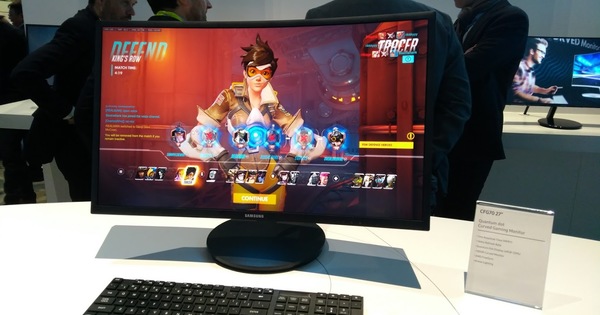If you are looking for a new smartphone, chances are that you immediately think of Asus. The manufacturer is trying to change that with the Asus Zenfone Max Pro M1, a device of 249 euros that offers a competitive price/quality ratio on paper. How is that in practice?
Asus Zenfone Max Pro M1
Price € 249,-Colors Silver, Gold and Black
OS Android 8.1
Screen 5.99 inch LCD (2160 x 1080)
Processor 1.8GHz octa-core (Qualcomm Snapdragon 636)
RAM 4GB
Storage 64GB (expandable with memory card)
Battery 5000 mAh
Camera 13 and 5 megapixels
(rear), 8 megapixel (front)
Connectivity 4G (LTE), Bluetooth 4.2, Wi-Fi, GPS, Dual SIM
Format 15.9 x 7.6 x 0.85 cm
Weight 160 grams
Other Micro USB, Headphone Port
Website www.asus.com 9 Score 90
- Pros
- Standard Android version
- Long battery life
- Performance and Storage Memory
- Premium design
- Negatives
- No nfc chip
- No fast charging function
- no usb-c
In any case, the exterior of the Zenfone Max Pro M1 leaves a good impression. Although the design is not original, the metal and plastic housing looks chic and is sturdy. On the back is a good fingerprint scanner, although it is not as fast as that of some competitors. At the front of the M1 you will find a large 6-inch screen with a modern, elongated 18:9 ratio. However, the edges around the screen are on the large side, so that the device cannot be operated with one hand for many people. You will also notice the considerable dimensions if you put the M1 in a – tight – pocket.
It is also a pity that the phone has an old micro-USB connection and not USB-C. A USB-C port has no top or bottom, so the cable always fits. This is not the case with micro USB. Another advantage of USB-C is that the battery can charge faster.
An NFC chip is also missing in the Zenfone Max Pro M1 – something we see more often on budget smartphones. Contactless payment is therefore not possible with this Asus phone.

Fast processor and dual SIM
More important things like the screen are fortunately perfectly fine. The LCD panel looks vibrant and natural and the full HD resolution ensures a sharp display. Although more and more smartphones have a screen notch, the M1 does without. That is not surprising: after all, the screen edges are large enough to accommodate all sensors and the front camera.
Asus has not cut corners under the hood. On the contrary. The Zenfone Max Pro M1 runs on a fast Snapdragon 636 processor and has 4GB of RAM and 64GB of storage memory. As a result, the device runs like a charm and is noticeably faster than competing phones such as the Motorola Moto G6, which has a slower processor and less working memory.
You can put an SD card and two SIM cards in the Zenfone Max Pro M1 at the same time, which is very nice and is rare on cheaper phones. Also striking is the large battery capacity (5000 mAh), so that we can use the Zenfone for two days without any problems. In comparison, most phones that are comparable to the M1 in terms of specifications and price, have a 3000 mAh battery. Charging the battery of the Zenfone phone takes a long time, more than three hours. Refueling a large battery takes longer anyway and Asus has cut back on a fast charging function.

Two cameras for portrait photos
A dual camera is placed on the back of the Zenfone. The combination consists of 13 and 5 megapixel cameras with apertures of f/2.2 and f/2.4. The primary camera takes great photos as long as there is enough (day) light. The quality is comparable to that of most competitors and is good enough to share snapshots via social media or to make a photo album. The secondary camera is used to shoot images with a sharpness/depth effect (bokeh). This works nicely and can come in handy when taking portrait photos. There is a clear difference in quality with the portrait function of more expensive smartphones with advanced cameras such as the Apple iPhone X. Looking at the price difference, however, that makes sense and the Asus phone works fine. In the (twilight) dark, the general photo and video quality of the cameras is less good, although you can still work with it. The 8-megapixel front camera also takes great photos and videos, as long as you don't zoom in too much. Then you see that the images look a bit grainy.

Standard Android software
For Asus, the Zenfone Max Pro M1 is an experimental device: it is the first Zenfone without Asus' ZenUI software. Without the shell, which looks and works very differently than the standard Android version, the Android 8.1 Oreo software on the M1 is 'stock' and updates should be released faster and more often. At least that's what Asus promises. Unfortunately, the software is kept by Asus and there is no question of Android One, which is real 'stock': Android without fuss. Asus does not want to give rock-solid guarantees and that is disappointing. Asus' update policy regarding ZenUI devices is moderate to bad, so we are curious.
In any case, the lack of ZenUI is a positive factor. Asus has only added three Facebook apps that unfortunately cannot be removed, only disabled. And the standard Android camera app has been replaced by an Asus app that looks dated, works illogical and takes photos less quickly. Sin. Fortunately, three other pre-installed Asus apps are more useful: an FM radio, a calculator and a sound recorder.



Conclusion
With the Zenfone Max Pro M1, Asus shows that you can buy an excellent smartphone for 249 euros. The M1 has a beautiful design and display, is fast, lasts a long time and runs on the standard Android version. Small budget cuts don't make the phone the best buy for everyone, but it is without a doubt one of the best budget smartphones out there. Bold competitors are the Xiaomi Mi A2 (4GB/64GB, 275 euros), the Motorola Moto G6 Plus (4GB/64GB, 279 euros) and the Huawei P20 Lite (4GB/64GB, 289 euros), so comparison is worth it.

